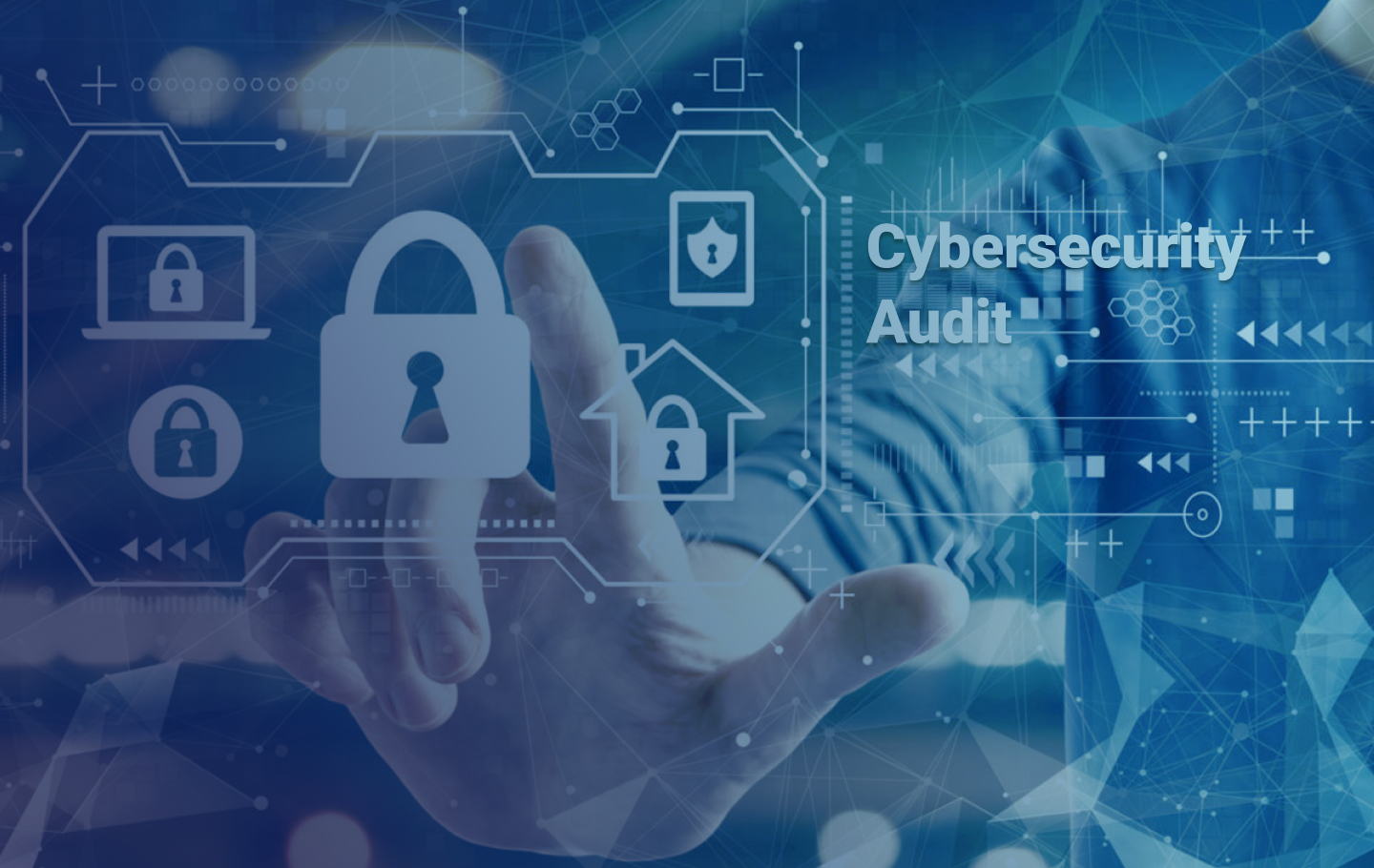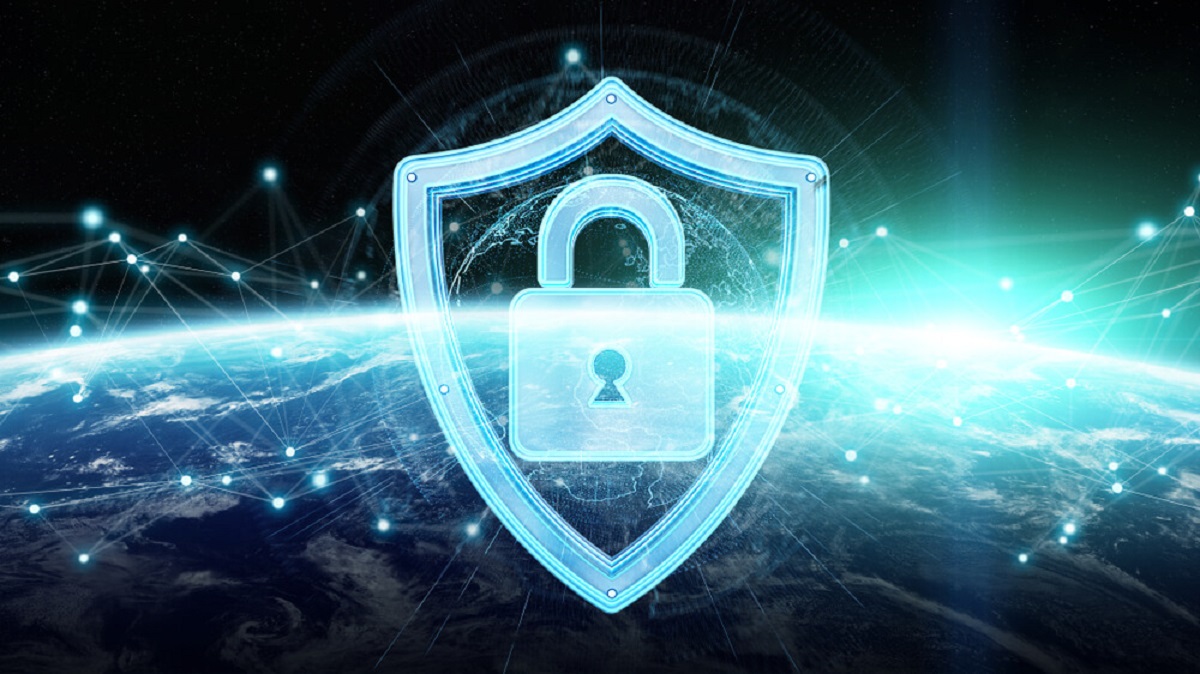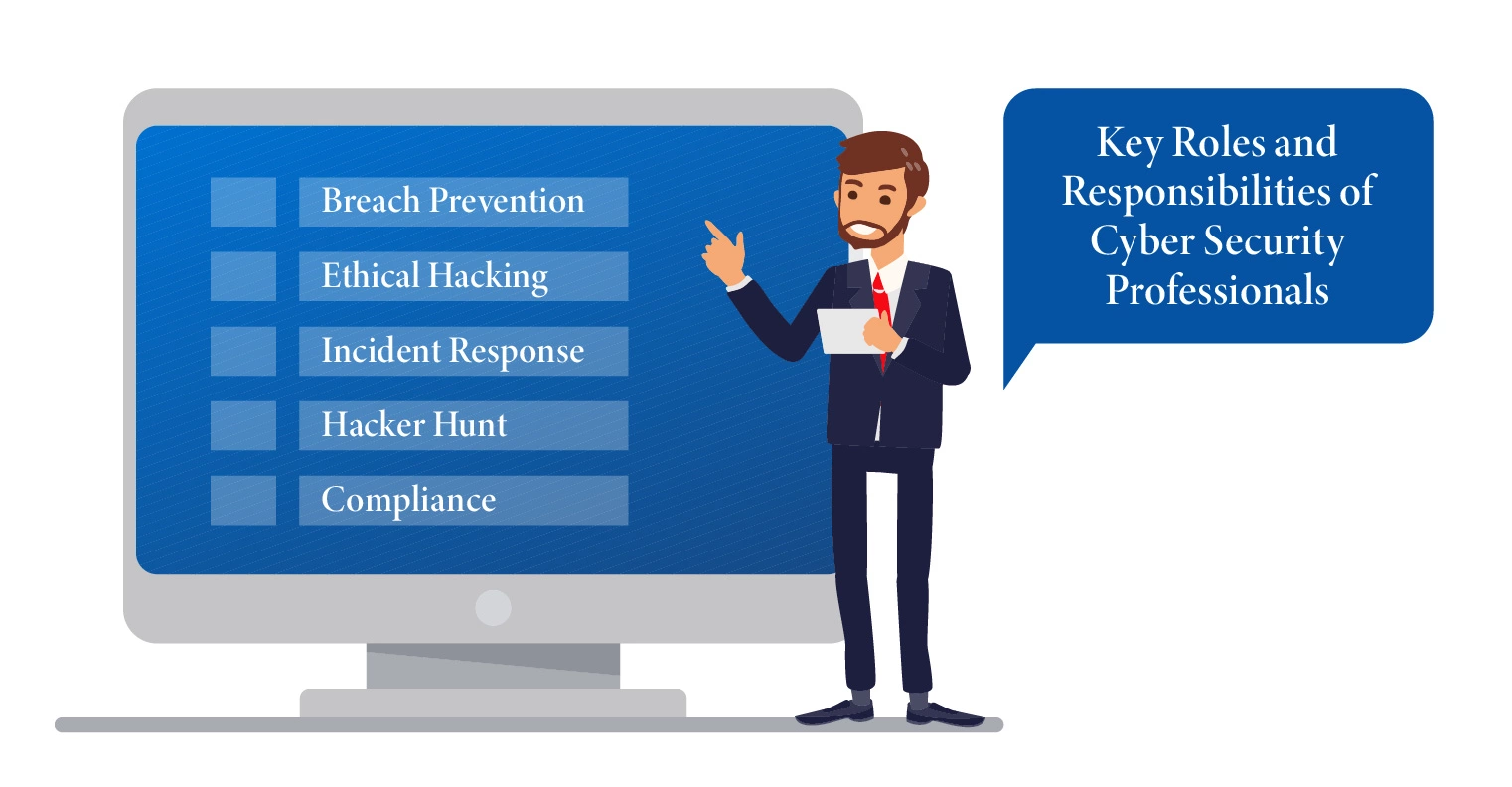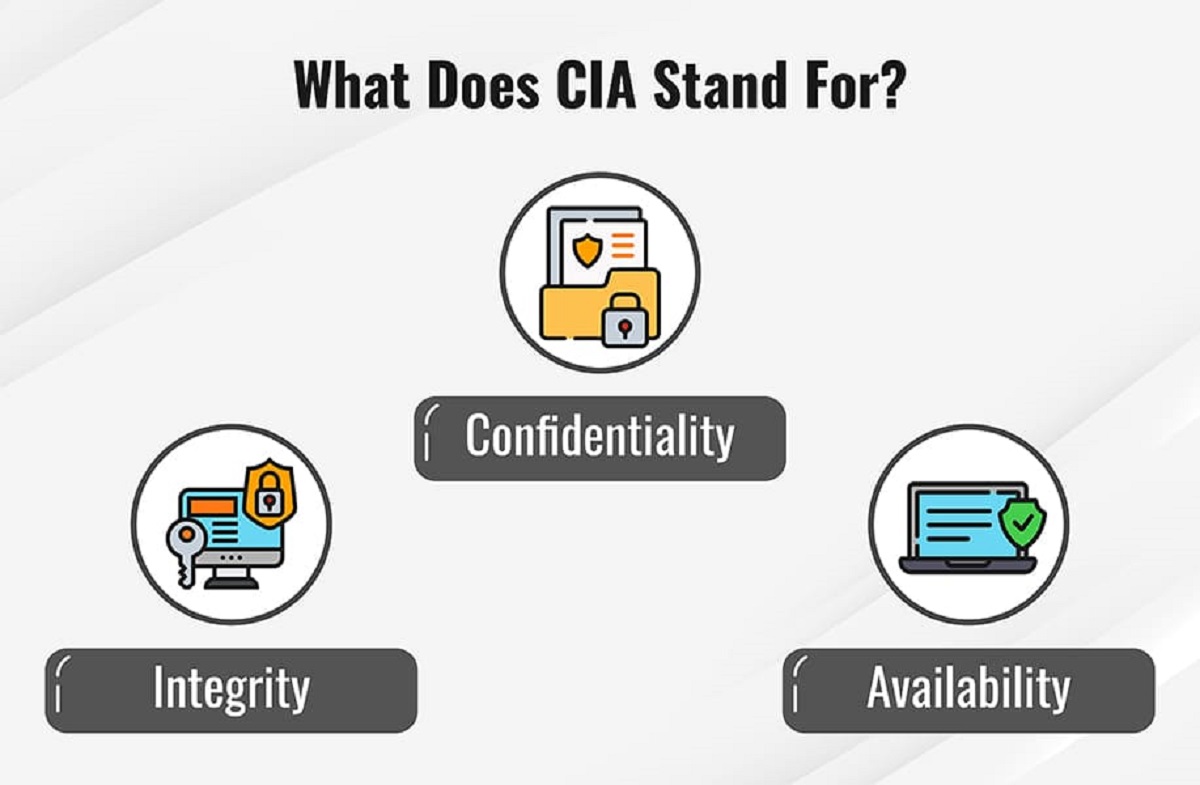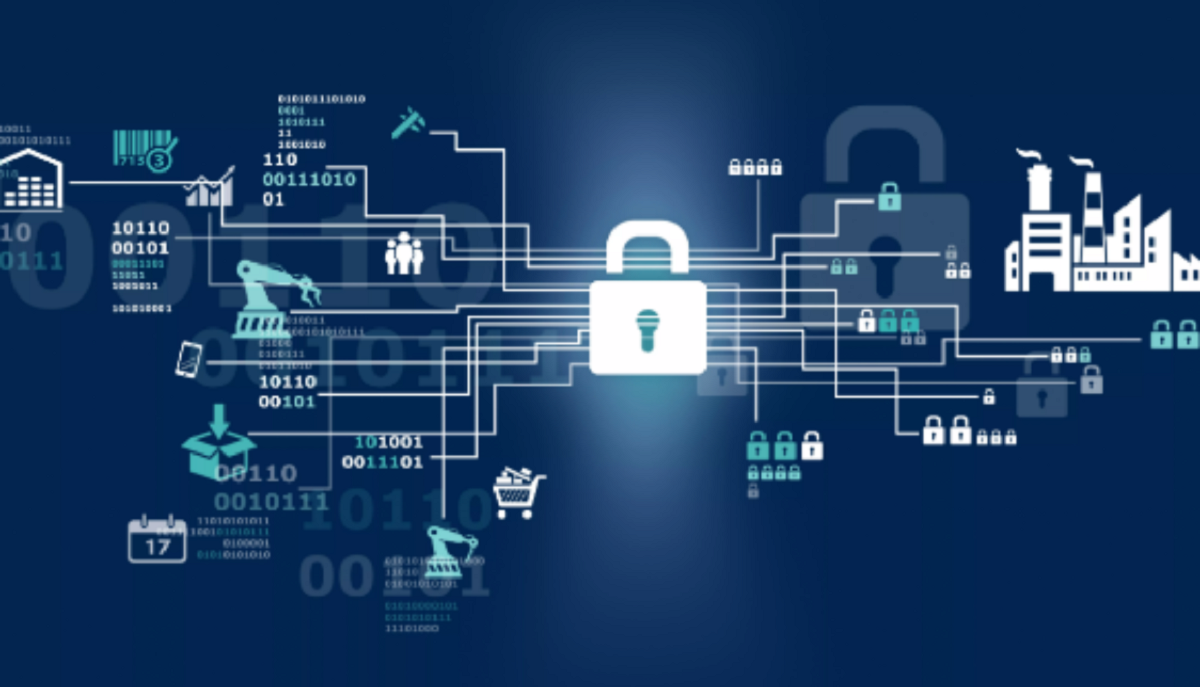Introduction
Welcome to the world of cybersecurity audits, where ensuring the safety and integrity of your digital assets takes center stage. The rapid advancement of technology has brought numerous benefits, but it has also exposed organizations to a myriad of threats. From data breaches to hackers exploiting vulnerabilities, businesses face constant risks to their sensitive information.
A cybersecurity audit is a systematic evaluation of an organization’s security measures, policies, and systems. Its primary goal is to assess the effectiveness of these controls and identify any weaknesses or gaps that could be exploited by potential attackers. By conducting regular cybersecurity audits, businesses can proactively mitigate risks, protect sensitive data, minimize system downtime, and ensure compliance with industry standards.
With the rise in cybercrime and the increasing sophistication of hacking techniques, the importance of cybersecurity audits cannot be overstated. Small to large-scale businesses, government agencies, and even individuals who handle sensitive information can benefit from these audits.
During a cybersecurity audit, various aspects of an organization’s security infrastructure are assessed, including network security, data security, access controls, physical security, incident response plans, and employee awareness and training programs. This comprehensive examination aims to identify vulnerabilities, evaluate the effectiveness of existing security controls, and recommend improvements to enhance the overall security posture of the organization.
In this article, we will delve deeper into the world of cybersecurity audits, exploring the processes involved, the importance of compliance, the types of audits conducted, and the benefits of implementing a robust cybersecurity audit program. Let’s embark on this journey together as we demystify the world of cybersecurity audits and discover the essential role they play in safeguarding our digital realm.
What is a Cybersecurity Audit?
A cybersecurity audit is a systematic examination of an organization’s security measures, policies, and procedures to ensure the integrity and protection of its digital assets. It involves evaluating the effectiveness of existing security controls, identifying vulnerabilities and weaknesses, and recommending improvements to enhance the overall security posture.
At its core, a cybersecurity audit aims to answer essential questions such as:
- Are the organization’s data and systems adequately protected against unauthorized access?
- What are the potential risks and vulnerabilities that could compromise the security of the organization’s assets?
- Are the organization’s security policies and procedures aligned with industry best practices and regulatory requirements?
- Do employees and stakeholders adhere to security protocols and have sufficient awareness about cybersecurity?
To address these questions, cybersecurity audits encompass a comprehensive evaluation of various security domains, including:
- Network security: Assessing the organization’s network infrastructure to identify any weaknesses or vulnerabilities that could enable unauthorized access or data breaches.
- Data security: Examining how sensitive data is handled, stored, and protected. This includes assessing encryption methods, access controls, and data backup and recovery processes.
- Access controls: Evaluating the effectiveness of user access controls, authentication protocols, and privileges management to ensure that only authorized individuals have appropriate access to critical systems and data.
- Physical security: Analyzing the physical safeguards in place to protect sensitive information, such as surveillance systems, restricted access areas, and secure disposal of physical media.
- Incident response plans: Reviewing the organization’s incident response procedures and protocols to assess their effectiveness in handling and mitigating cybersecurity incidents.
- Employee awareness and training: Assessing the level of awareness and training provided to employees regarding cybersecurity best practices, phishing attacks, malware prevention, and data protection.
By conducting regular cybersecurity audits, organizations can identify and address potential weaknesses before they are exploited by cybercriminals. These audits provide valuable insights into the organization’s security posture and help align security measures with industry standards and compliance requirements.
To ensure the effectiveness and integrity of the audit process, many organizations opt to engage external cybersecurity audit firms or hire certified professionals who possess the expertise and experience in evaluating security controls and providing recommendations for improvement.
Why is a Cybersecurity Audit important?
In today’s digital landscape, where cyber threats are constantly evolving, a cybersecurity audit plays a crucial role in protecting an organization’s valuable assets. Here are the key reasons why conducting regular cybersecurity audits is of utmost importance:
Identifying Vulnerabilities and Weaknesses:
A cybersecurity audit allows businesses to identify vulnerabilities and weaknesses in their security infrastructure. By conducting thorough assessments of networks, systems, and processes, organizations can understand where potential threats may arise and take appropriate measures to address them. This proactive approach helps prevent potential cyber attacks and minimizes the risk of data breaches or unauthorized access.
Ensuring Compliance with Regulatory Standards:
Compliance with industry regulations and standards is a critical aspect of cybersecurity. Many industries have regulatory frameworks and requirements that organizations must adhere to, such as the General Data Protection Regulation (GDPR) for organizations handling personal data of EU citizens. A cybersecurity audit helps assess an organization’s compliance with these regulations, enabling them to address any non-compliance issues and avoid penalties and reputational damage.
Safeguarding Sensitive Data:
In today’s data-driven world, protecting sensitive data is paramount. A cybersecurity audit evaluates the effectiveness of an organization’s data protection measures, including encryption protocols, access controls, and data storage practices. By identifying vulnerabilities and implementing necessary safeguards, organizations can safeguard sensitive data from unauthorized access and data breaches, ensuring the privacy and confidentiality of their customers and stakeholders.
Minimizing Downtime and Business Disruption:
Cybersecurity incidents can have severe consequences, leading to system downtime, operational disruptions, and financial losses. A cybersecurity audit helps organizations identify potential security risks and vulnerabilities that could cause system failures or breaches. By addressing these risks proactively, organizations can minimize downtime, maintain business continuity, and avoid the potentially devastating impacts of cyber incidents.
Building Trust and Reputation:
Businesses that prioritize cybersecurity and conduct regular audits demonstrate their commitment to protecting their customers’ data. This proactive approach not only enhances trust and confidence among customers, partners, and stakeholders but also strengthens the organization’s reputation in the market. In today’s digital age, where news of data breaches spreads rapidly, a strong cybersecurity posture can be a critical competitive advantage.
Ultimately, a cybersecurity audit is not just about identifying vulnerabilities and weaknesses; it is about taking proactive steps to mitigate risks, protect sensitive data, and ensure regulatory compliance. By investing in regular cybersecurity audits, organizations can effectively manage their security risks, stay ahead of emerging threats, and protect their most valuable assets.
The Process of a Cybersecurity Audit
The process of conducting a cybersecurity audit involves several stages, each aimed at comprehensively evaluating an organization’s security measures and identifying areas for improvement. Here is an overview of the typical steps involved in a cybersecurity audit:
1. Planning and Scoping:
During the planning stage, the auditor works closely with the organization to define the scope of the audit. This includes identifying the systems, networks, and processes to be audited, as well as the specific security controls and compliance requirements to be assessed. Establishing clear objectives and timelines for the audit is crucial to ensure an efficient and effective assessment.
2. Gathering Information:
The next step involves collecting and reviewing relevant documentation, such as security policies, procedures, incident response plans, and previous audit reports. The auditor also conducts interviews with key stakeholders to gather information about the organization’s security practices, employee training, and incident history. This information serves as the foundation for understanding the organization’s security posture and identifying potential areas of concern.
3. Identifying Risks and Vulnerabilities:
In this stage, the auditor performs a thorough assessment of the organization’s security controls, systems, and networks. Various tools and techniques are utilized, such as vulnerability scanning, penetration testing, and risk assessments, to identify potential risks and vulnerabilities. The goal is to uncover weaknesses that could be exploited by attackers and analyze the potential impact of those vulnerabilities on the organization’s overall security.
4. Assessing and Testing Security Measures:
Once risks and vulnerabilities are identified, the auditor evaluates the effectiveness of existing security measures and controls. This may involve reviewing access controls, network configurations, intrusion detection systems, antivirus software, data backups, and other security mechanisms. The auditor tests these controls to ensure they are functioning as intended and provides recommendations on any areas that need improvement.
5. Documentation and Reporting:
Throughout the audit process, the auditor maintains detailed documentation of findings, observations, and recommendations. This documentation serves as a comprehensive report that highlights the organization’s current security posture, identifies vulnerabilities, and provides actionable recommendations for improvement. The final report is shared with key stakeholders, including management and IT teams, to ensure a clear understanding of the organization’s security strengths and weaknesses.
6. Remediation and Improvement:
After the audit report is presented, the organization takes action to address the identified vulnerabilities and weaknesses. This may involve implementing new security controls, revising policies and procedures, conducting employee training programs, or enhancing incident response plans. Regular follow-up audits may be conducted to ensure that the recommended improvements have been implemented effectively.
The process of a cybersecurity audit is dynamic and ongoing. As new threats emerge and technologies evolve, organizations must continuously assess their security measures and adapt to the changing landscape. By investing in regular cybersecurity audits, organizations can proactively strengthen their security posture, protect their assets, and stay one step ahead of potential threats.
Identifying Risks and Vulnerabilities
Identifying risks and vulnerabilities is a vital component of a cybersecurity audit as it allows organizations to understand their potential weaknesses and areas of concern. This stage involves a comprehensive assessment of an organization’s systems, networks, and processes to identify potential risks that could be exploited by malicious actors. By identifying these risks and vulnerabilities, organizations can take proactive measures to strengthen their security measures and mitigate potential threats.
During this stage of the audit, auditors employ various techniques and tools to identify and assess risks and vulnerabilities. Here are some key methods commonly used:
1. Vulnerability Scanning:
A vulnerability scan is a crucial part of the audit process. It involves using specialized software to automatically scan networks, systems, and web applications for known vulnerabilities. Vulnerability scanners identify weaknesses such as outdated software versions, misconfigured settings, or unpatched vulnerabilities that could be exploited by attackers. The results of the scan provide valuable insights into potential risks and vulnerabilities that need to be addressed.
2. Penetration Testing:
Penetration testing, also known as ethical hacking, involves simulating a real-world attack to identify vulnerabilities in an organization’s systems and networks. This process is carried out by trained professionals who attempt to exploit security weaknesses to gain unauthorized access or steal sensitive data. By conducting penetration tests, organizations can uncover potential risks and vulnerabilities that might not be detected through traditional scanning methods.
3. Risk Assessment:
Risk assessment involves a systematic evaluation of an organization’s assets, potential threats, and vulnerabilities to prioritize risks based on their potential impact. This process helps organizations understand the likelihood of specific risks occurring and the potential impact on their systems and operations. By identifying and assessing risks, organizations can prioritize resources and implement appropriate measures to mitigate them effectively.
4. Security Control Testing:
Auditors thoroughly evaluate existing security controls to assess their effectiveness in addressing potential risks and vulnerabilities. This includes reviewing access controls, network configurations, logging and monitoring systems, and other security mechanisms in place. The auditor may also test the controls by attempting to bypass security measures, exploiting any identified weaknesses to assess their impact.
Identifying risks and vulnerabilities is a critical step in a cybersecurity audit as it provides organizations with actionable insights into potential points of weakness. It allows organizations to prioritize their efforts and allocate resources appropriately to address the most pressing security concerns. By proactively identifying and mitigating risks and vulnerabilities, organizations can enhance their security posture and reduce the likelihood of a successful cyber attack or data breach.
Assessing and Testing Security Measures
Assessing and testing security measures is a crucial stage in the cybersecurity audit process. This phase involves evaluating the effectiveness and functionality of an organization’s existing security controls, systems, and processes. Through thorough assessments and testing, auditors can identify any weaknesses or gaps in security measures and provide recommendations for improvement.
1. Reviewing Access Controls:
One aspect of assessing security measures is reviewing access controls. Auditors examine how user access is granted, managed, and revoked within the organization’s systems. They verify that appropriate access levels are assigned to individuals based on their job roles and responsibilities. This review ensures that only authorized personnel have access to the necessary resources, mitigating the risk of insider threats or unauthorized access.
2. Analyzing Network Configurations:
Network configurations are a critical component of a robust cybersecurity framework. Auditors evaluate network configurations to ensure that proper security protocols, such as firewalls, intrusion detection systems, and virtual private networks (VPNs), are in place. They also review network segmentation to minimize the impact of a potential breach and reduce the lateral movement of attackers.
3. Testing Vulnerability Management:
Auditors conduct extensive vulnerability testing to identify any weaknesses that could be exploited by attackers. This includes performing vulnerability scanning, software patching analysis, and penetration testing. By simulating real-world attacks, auditors can identify vulnerabilities and provide actionable recommendations to further strengthen the organization’s security posture.
4. Examining Data Protection Measures:
Data protection is a critical aspect of cybersecurity. Auditors review data protection measures, such as encryption protocols, data backup and recovery procedures, and data classification policies. They ensure that sensitive data is adequately protected both at rest and in transit. Additionally, auditors check if data destruction and disposal methods comply with security standards to prevent unauthorized access to discarded information.
5. Evaluating Incident Response Plans:
An effective incident response plan is crucial for mitigating the impact of cyber incidents. Auditors assess the organization’s incident response procedures, including communication protocols, incident escalation processes, and post-incident analysis. They analyze the effectiveness and efficiency of the plan to ensure a timely and coordinated response to potential security incidents.
6. Assessing Employee Awareness and Training Programs:
Human error remains one of the greatest cybersecurity risks. Auditors assess the effectiveness of employee awareness and training programs by evaluating security awareness training materials, policies, and procedures. They analyze the organization’s efforts to educate employees on best practices, such as password hygiene, email phishing awareness, and safe browsing habits, to minimize the likelihood of security incidents caused by human error.
Through a comprehensive assessment and testing process, auditors uncover potential vulnerabilities and weaknesses in an organization’s security measures. Based on their findings, they provide actionable recommendations for improvements, helping the organization strengthen its overall cybersecurity posture.
Documentation and Reporting
Documentation and reporting are essential components of a cybersecurity audit. This phase involves compiling detailed documentation of the audit findings, observations, and recommendations. The documentation serves as a comprehensive report that provides insights into the organization’s security posture and serves as a roadmap for improving cybersecurity measures.
1. Detailed Audit Report:
One of the key deliverables of a cybersecurity audit is the detailed audit report. This report summarizes the audit process, the objectives, and the scope of the assessment. It includes an executive summary that provides a high-level overview of the organization’s security posture, key findings, and recommendations. It also provides a detailed analysis of the assessment, including vulnerabilities identified, potential risks, and their potential impact on the organization’s operations and data.
2. Findings and Recommendations:
The audit report includes a comprehensive analysis of the findings and vulnerabilities uncovered during the assessment. It provides a detailed description of each vulnerability, including its severity level and recommended actions to mitigate the risks. The report may include a prioritization of recommendations based on the level of risk and potential impact on the organization’s security.
3. Action Plan:
An effective audit report includes an action plan that outlines the steps the organization needs to take to address the identified vulnerabilities and improve its security posture. The action plan should provide a clear timeline, responsibilities, and resources required for implementing the recommendations. This ensures that the organization can take meaningful steps towards enhancing its cybersecurity measures.
4. Compliance Assessment:
Depending on the specific industry and regulatory requirements, the audit report may include an assessment of the organization’s compliance with relevant standards and regulations. This helps the organization identify any gaps in compliance and take appropriate actions to meet the necessary regulatory obligations.
5. Clear and Accessible Format:
The audit report should be presented in a clear and accessible format that can be easily understood by both technical and non-technical stakeholders. It should include visual aids, charts, and graphs to present data and findings in a concise manner. This ensures that the report is accessible to all relevant parties, including management, IT personnel, and other key stakeholders.
Documentation and reporting provide a comprehensive overview of the organization’s security posture and identified vulnerabilities. It serves as a valuable tool for communicating the risks and necessary improvements to key stakeholders. By following the recommendations outlined in the audit report, organizations can enhance their security measures and proactively mitigate potential threats to their digital assets.
Remediation and Improvement
Remediation and improvement are crucial steps that follow the identification of vulnerabilities and weaknesses in a cybersecurity audit. Once the audit report is delivered, organizations need to take prompt action to address the identified risks and enhance their overall security posture. This stage involves implementing the recommended changes and improvements to mitigate the identified vulnerabilities.
1. Prioritization of Recommendations:
Before initiating remediation efforts, organizations should prioritize the recommendations outlined in the audit report. Prioritization can be based on factors such as the severity and potential impact of the vulnerabilities, the available resources, and the organization’s risk tolerance. This ensures that critical issues are addressed first, minimizing the potential risk exposure.
2. Designing and Implementing Security Controls:
Organizations need to design and implement appropriate security controls to mitigate the identified vulnerabilities. This may involve updating and patching software, configuring firewalls and intrusion detection systems, improving network segmentation, and strengthening access controls. Strong encryption and data protection measures should also be put in place to safeguard sensitive information.
3. Employee Training and Awareness:
Human error is often a significant factor in cybersecurity incidents. Organizations should provide regular training and awareness programs to educate employees about cybersecurity best practices. By fostering a culture of security awareness, organizations can empower employees to make informed decisions and minimize the risk of falling victim to social engineering attacks or inadvertently compromising security measures.
4. Incident Response Enhancement:
Based on the audit findings, organizations should revise and enhance their incident response plans. This includes clarifying roles and responsibilities, establishing clear communication channels, and conducting regular tabletop exercises and simulations to ensure that the incident response plan is effective and well-practiced. Timely and efficient incident response can minimize the impact of security incidents and enable a swift recovery.
5. Continuous Monitoring and Evaluation:
Remediation efforts are not a one-time event; they require continuous monitoring and evaluation. Organizations should implement tools and processes to monitor and detect potential security threats and vulnerabilities continuously. Regular evaluation of security controls, monitoring systems, and incident response plans allows organizations to refine and improve their security measures based on evolving threats and business needs.
It is important for organizations to view remediation and improvement as an ongoing process rather than a one-off event. By regularly reassessing their security posture, collaborating with internal and external stakeholders, and staying informed about the latest cybersecurity trends, organizations can remain vigilant in their efforts to protect their digital assets.
The Role of Compliance in Cybersecurity Audits
Compliance with industry regulations and standards plays a significant role in cybersecurity audits. Meeting compliance requirements is not only a legal obligation but a crucial aspect of maintaining a strong security posture. Cybersecurity audits often include an assessment of an organization’s compliance with relevant regulations, ensuring that the security measures implemented align with industry-specific guidelines.
1. Regulatory Compliance:
Many industries have specific regulatory frameworks in place to protect sensitive data and ensure the privacy of individuals. Examples include the General Data Protection Regulation (GDPR) for organizations handling personal data of EU citizens, the Health Insurance Portability and Accountability Act (HIPAA) for healthcare organizations, and the Payment Card Industry Data Security Standard (PCI DSS) for organizations handling debit and credit card transactions. Compliance with these regulations is critical, as non-compliance can result in severe financial penalties and reputational damage.
2. Industry Standards and Frameworks:
Industry standards and frameworks, such as the National Institute of Standards and Technology (NIST) Cybersecurity Framework, provide guidelines and best practices for organizations to follow. These standards serve as a benchmark for evaluating an organization’s security practices. Compliance with these standards demonstrates a commitment to adopting recognized security controls and measures that align with industry norms.
3. Risk Mitigation:
Compliance with industry regulations and standards helps organizations mitigate risks effectively. These regulations often require specific security measures to be in place, such as encryption protocols, access controls, and incident response plans. By adhering to these requirements, organizations can reduce the likelihood and impact of potential security incidents and data breaches.
4. Stakeholder Trust and Assurance:
Compliance with regulations and industry standards helps build trust and confidence among customers, partners, and stakeholders. Demonstrating a commitment to protecting sensitive data and ensuring compliance with legal and industry requirements enhances an organization’s reputation and credibility. Compliance with security standards also becomes a competitive advantage, as customers and partners often prioritize working with organizations that can demonstrate compliance.
5. Audit Preparedness:
Regular cybersecurity audits ensure that an organization is prepared for external audits or regulatory inspections. By regularly assessing their security controls, policies, and procedures, organizations can identify and address any compliance gaps proactively. This not only reduces the potential for fines and penalties in case of an audit but also demonstrates due diligence to regulatory bodies.
In summary, compliance with industry regulations and standards is a critical aspect of cybersecurity audits. It helps organizations meet legal requirements, mitigate risks, build trust with stakeholders, and ensure preparedness for future audits or inspections. Integrating compliance requirements into the cybersecurity audit process ensures that organizations meet the necessary security standards and safeguards critical data and assets.
Types of Cybersecurity Audits
There are several types of cybersecurity audits, each focusing on specific areas of an organization’s security measures. These audits provide a comprehensive assessment of an organization’s security infrastructure, identify vulnerabilities, and offer recommendations for improvement. Let’s explore some of the most common types of cybersecurity audits:
1. Network Security Audit:
A network security audit focuses on evaluating an organization’s network infrastructure, including routers, switches, firewalls, and intrusion detection systems. The audit assesses the network’s configuration, access controls, network segmentation, and vulnerability management practices. It identifies potential vulnerabilities, misconfigurations, and weak points that could be exploited by unauthorized users or attackers.
2. Application Security Audit:
An application security audit evaluates the security of an organization’s software applications. It assesses the effectiveness of security controls, coding practices, and authorization mechanisms within the applications. The audit aims to identify vulnerabilities and weaknesses in application design, code, and functionality. It also ensures that appropriate security measures, such as input validation, session management, and encryption, are implemented within the applications.
3. Data Security Audit:
A data security audit focuses on the protection of sensitive data within an organization. It examines how data is stored, transmitted, and accessed. The audit assesses data classification, encryption practices, access controls, data backup and recovery procedures, and compliance with data protection regulations. It helps identify vulnerabilities in data storage, data handling procedures, and data governance practices.
4. Physical Security Audit:
A physical security audit evaluates the physical safeguards in place to protect an organization’s assets, equipment, and facilities. This includes assessing physical access controls, surveillance systems, alarm systems, and security policies. Additionally, the audit may examine the secure disposal of physical media, visitor management processes, and employee identification practices.
5. Compliance Audit:
A compliance audit focuses on ensuring an organization’s adherence to relevant regulations and industry standards. It assesses the organization’s compliance with specific requirements, such as the General Data Protection Regulation (GDPR), the Health Insurance Portability and Accountability Act (HIPAA), or other industry-specific standards. The audit ensures that the organization meets the necessary security controls, policies, and procedures mandated by the applicable regulatory bodies.
6. Third-Party Vendor Audit:
A third-party vendor audit assesses the security measures implemented by external vendors or service providers that have access to an organization’s systems or data. This audit ensures that vendors comply with security requirements, have appropriate security controls in place, and protect the organization’s data and assets adequately.
These are just a few examples of the types of cybersecurity audits that organizations can perform. The choice of audit type depends on the organization’s specific needs, industry regulations, and the areas of focus deemed most critical to the organization’s security posture.
Benefits of a Cybersecurity Audit
A cybersecurity audit offers numerous benefits to organizations, regardless of their size or industry. By conducting regular assessments of their security measures and practices, organizations can proactively identify vulnerabilities, strengthen their security posture, and mitigate risks. Let’s explore some of the key benefits of a cybersecurity audit:
1. Risk Identification and Mitigation:
One of the primary benefits of a cybersecurity audit is the identification and mitigation of risks. Audits help organizations identify potential vulnerabilities and weaknesses in their security infrastructure, systems, and processes. By addressing these risks, organizations can minimize the likelihood of cyberattacks, data breaches, and other security incidents.
2. Enhanced Security Posture:
Cybersecurity audits provide valuable insights into an organization’s security posture. By evaluating existing security controls and practices, audits help organizations understand their strengths and weaknesses. With this knowledge, organizations can make informed decisions to enhance their security measures, implement best practices, and align their security policies with industry standards.
3. Compliance with Regulations and Standards:
Compliance with industry regulations and standards is critical for organizations. Cybersecurity audits assess an organization’s compliance with relevant regulations such as the General Data Protection Regulation (GDPR), the Health Insurance Portability and Accountability Act (HIPAA), and other industry-specific standards. Compliance ensures that organizations adhere to specific security controls, policies, and procedures, reducing the risk of legal ramifications and reputational damage.
4. Protection of Sensitive Data:
Conducting a cybersecurity audit helps organizations protect sensitive data. Audits evaluate data security measures such as encryption protocols, access controls, and data protection practices. By identifying potential vulnerabilities and implementing the necessary safeguards, organizations can enhance the confidentiality, integrity, and availability of their data, safeguarding it from unauthorized access and data breaches.
5. Business Continuity and Downtime Prevention:
Cybersecurity incidents can lead to significant downtime and operational disruptions. By identifying vulnerabilities and weaknesses through audits, organizations can proactively address potential threats and minimize system downtime. Strengthening security measures and implementing robust incident response plans ensures a quicker recovery, reducing the impact on business operations.
6. Stakeholder Trust and Confidence:
Investing in cybersecurity audits demonstrates an organization’s commitment to protecting its assets, including customer data. Regular audits build trust and confidence among customers, partners, and stakeholders, enhancing the organization’s reputation. Customers are more likely to engage with organizations that prioritize cybersecurity, fostering stronger relationships and perceived reliability.
7. Cost Savings:
While conducting cybersecurity audits incurs costs, they can lead to cost savings in the long run. Identifying vulnerabilities and addressing them early helps organizations avoid potential incidents that can result in financial losses and reputational damage. Implementing recommended improvements based on audit findings can also reduce the risk of expensive security breaches and associated recovery expenses.
Overall, cybersecurity audits provide organizations with valuable insights into their security posture, identify vulnerabilities, and recommend improvements. By proactively addressing risks and strengthening security measures, organizations can protect their valuable assets, comply with regulations, build trust with stakeholders, and reduce the potential impact of security incidents.
Conclusion
Cybersecurity audits are a vital component of an organization’s overall security strategy. In today’s digital landscape, where cyber threats continue to evolve, conducting regular audits is essential to identify vulnerabilities, strengthen security measures, and mitigate risks. From network security and data protection to compliance with regulations, audits provide organizations with valuable insights and actionable recommendations for improvement.
Through the process of a cybersecurity audit, organizations can identify potential weaknesses in their security infrastructure, assess the effectiveness of existing controls, and implement necessary enhancements. By prioritizing recommendations and taking proactive steps to address vulnerabilities, organizations can minimize the likelihood of cyberattacks, protect sensitive data, and maintain business continuity.
Compliance with industry regulations and standards is also a crucial aspect of cybersecurity audits. By ensuring adherence to these requirements, organizations demonstrate their commitment to protecting customer data and maintaining a high level of security. This compliance not only helps prevent legal ramifications but also establishes trust and confidence among customers, partners, and stakeholders.
Furthermore, conducting cybersecurity audits contributes to cost savings in the long run. By identifying and addressing vulnerabilities early on, organizations can avoid costly security breaches and the associated recovery expenses. Proactive security measures and improved incident response plans also help reduce system downtime and minimize potential financial losses and reputational damage.
In conclusion, cybersecurity audits empower organizations to take a proactive approach in protecting their digital assets and mitigating risks. By regularly assessing their security measures, organizations can identify vulnerabilities, implement necessary improvements, and maintain compliance with relevant regulations. The benefits of cybersecurity audits extend beyond enhancing security; they build trust, protect sensitive data, and contribute to the overall success and resilience of an organization in the face of evolving cyber threats.







